Trending:
India’s Mohenjo-daro: The Harappan site of Dholavira
Locally known as Kotada Timba, the ancient city of Dholavira, 60 km from Kutch, is among the five largest sites of the Indus Valley Civilisation.News Arena Network - Chandigarh - UPDATED: July 1, 2025, 04:39 PM - 2 min read

If you wonder wading through water-logged streets, whether it is development or the want of it, you may like to know, about 5,000 years ago our ancestors managed water resources almost to perfection, at Dholavira, in Gujarat.
The march of human civilisation has created and destroyed town planning systems many times over, to start afresh. This is more than evident at several archaeological sites dating back to thousands of years with evidences of highly sophisticated planning for urban infrastructure. At Dholavira, irrigation and water management systems were designed with precision, using natural undulations.
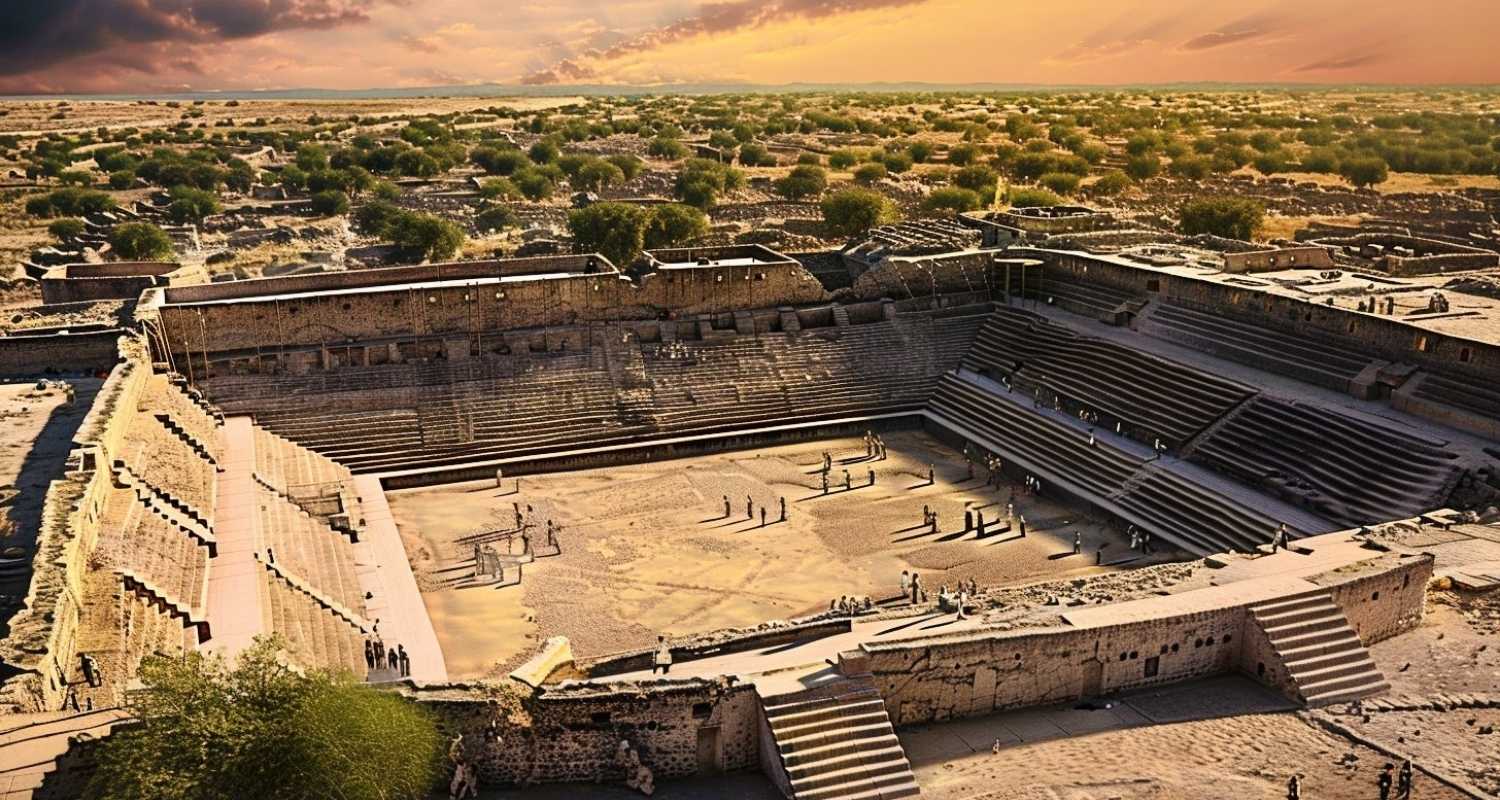
Among ancient civilisations, Harappan culture was not the start of Indian civilisation, as commonly believed. Recent excavations have established that it was just another chapter in the long story of civilisational evolution. Though it was a very important chapter which offered insights into well-planned, urban sites that our ancestors inhabited. Recent studies reveal that humans lived in Gujarat’s Kutch area over 12,000 years ago, predating the Harappan culture by 5,000 years.
The two largest and most well-known urban centres of the Indus Valley civilisation—Harappa and Mohenjo-daro along with other significant sites like Chanhudaro and Kot Diji, became part of Pakistan due to the partition of 1947. Therefore, the discovery of a Harappan site in Dholavira was of great relevance for Indian archaeologists.
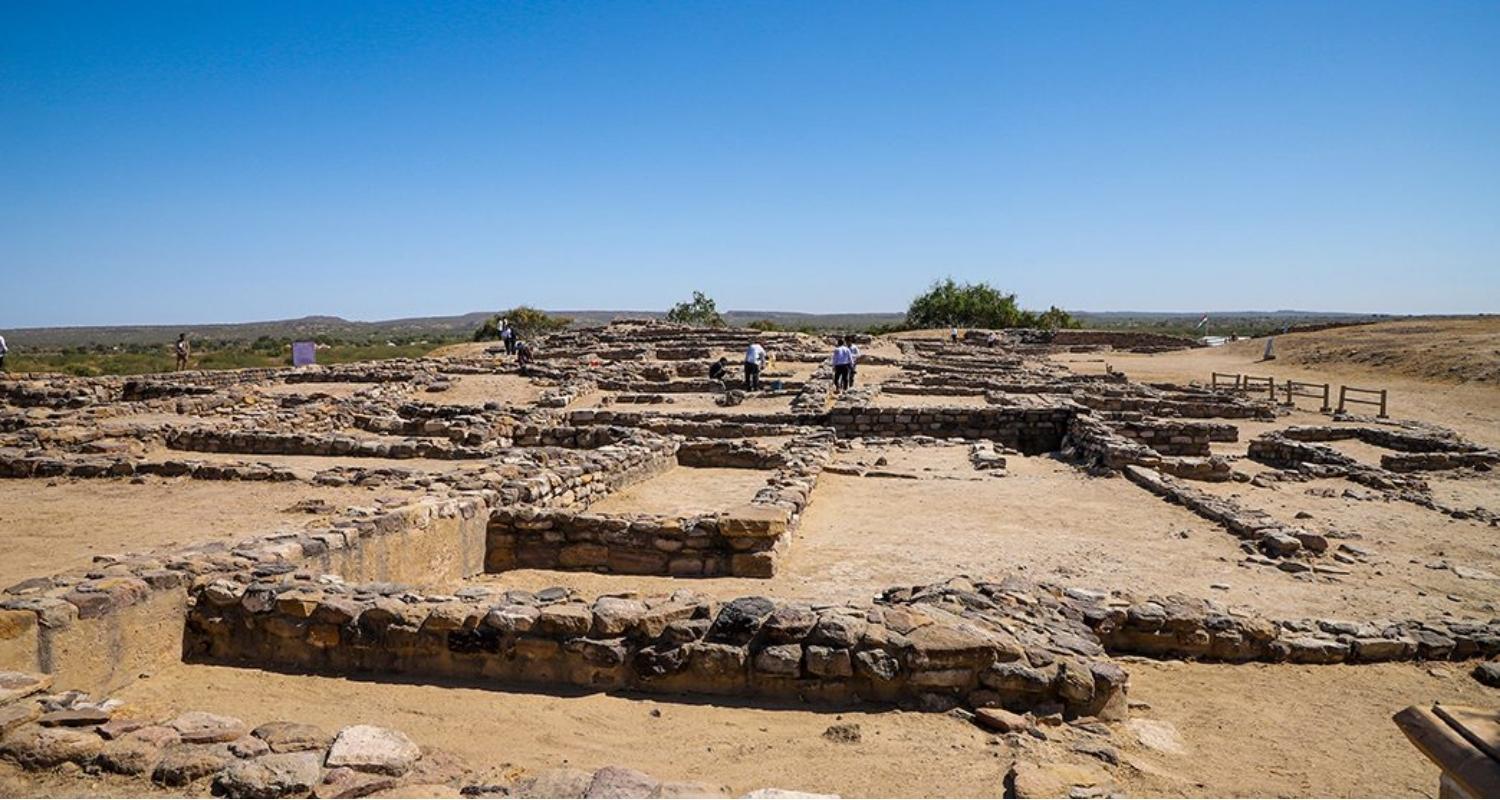
Locally known as Kotada Timba, the ancient city of Dholavira, 60 km from Kutch, is among the five largest sites of the Indus Valley Civilisation. Archaeological findings suggest that Dholavira was occupied around 3500 BCE (pre-Harappan period) and lasted till around 1800 BCE, the late Harappan period.
A jewel in the desert
A drive through the breathtakingly beautiful 30 km stretch of Road to Heaven through the Great Rann of Kutch, leads to this slice of India’s ancient civilisation. The site is unique for it tells the story of seven stages of civilisation—from development to maturity to decay and disappearance.
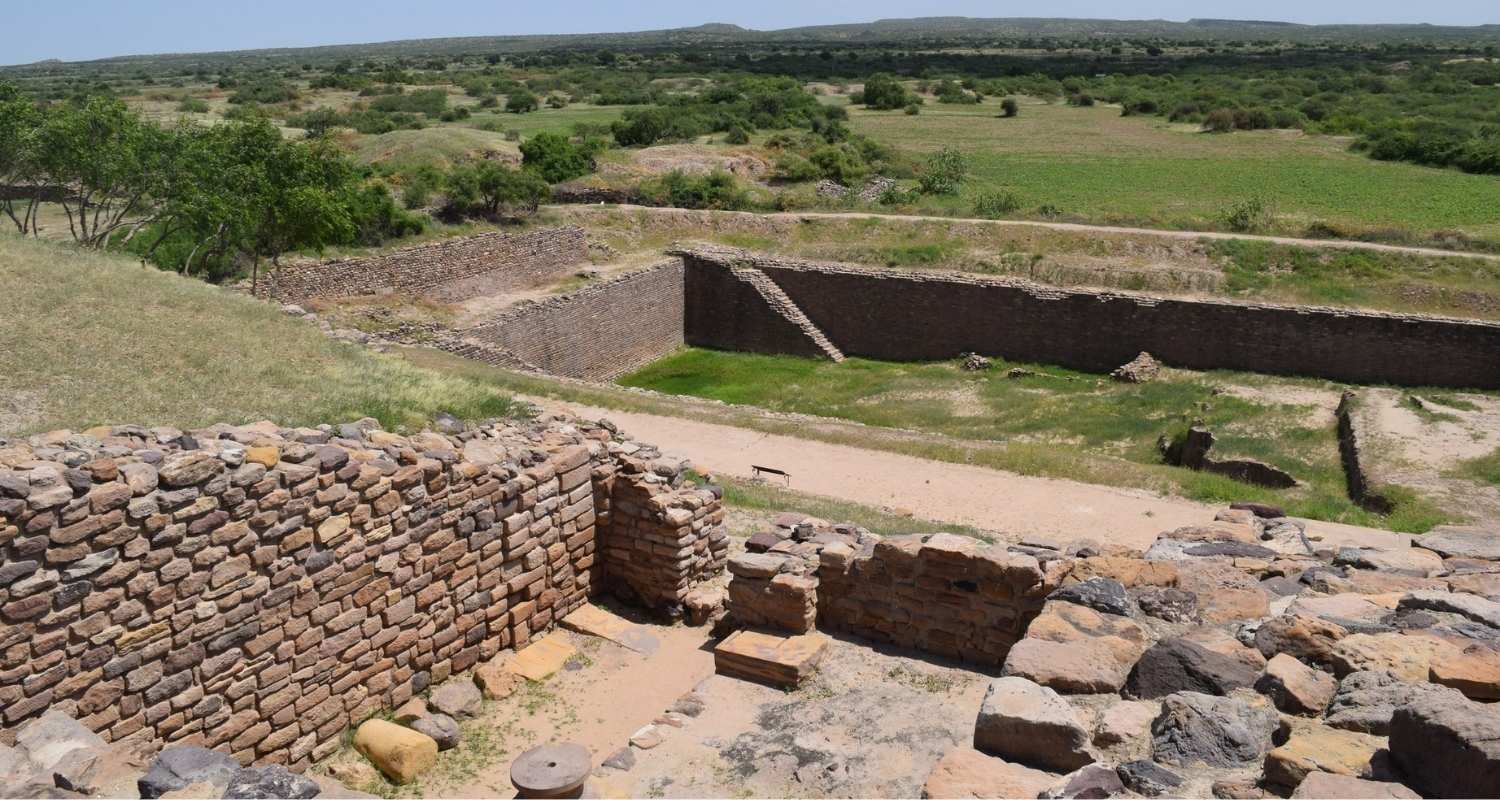
Sprawling over 100 acres of semi-arid land, Dholavira, now among UNESCO World Heritage sites, is the southern centre of Harappan civilisation. Situated at an elevated level, it does not get submerged in waters during monsoons while the surrounding desert gets flooded.
The site of Dholavira was discovered by a local farmer who found pieces of pottery while digging his fields. He took the pieces to archaeologist Jagat Poti Joshi, in 1967. Joshi recognised the relevance of the pieces of pottery and accompanied the farmer to his village. Despite keen interest of the local archaeologists like Joshi and others in the site, due to several factors a systematic excavation was delayed. It commenced only around 1990 and continued until 2005 to present to the world another story of India’s highly developed civilisation. The excavation work was led by the team of Dr Ravindra Singh Bisht. One can see several marvellous pieces excavated at Dholavira Archaeological Museum, at the site.
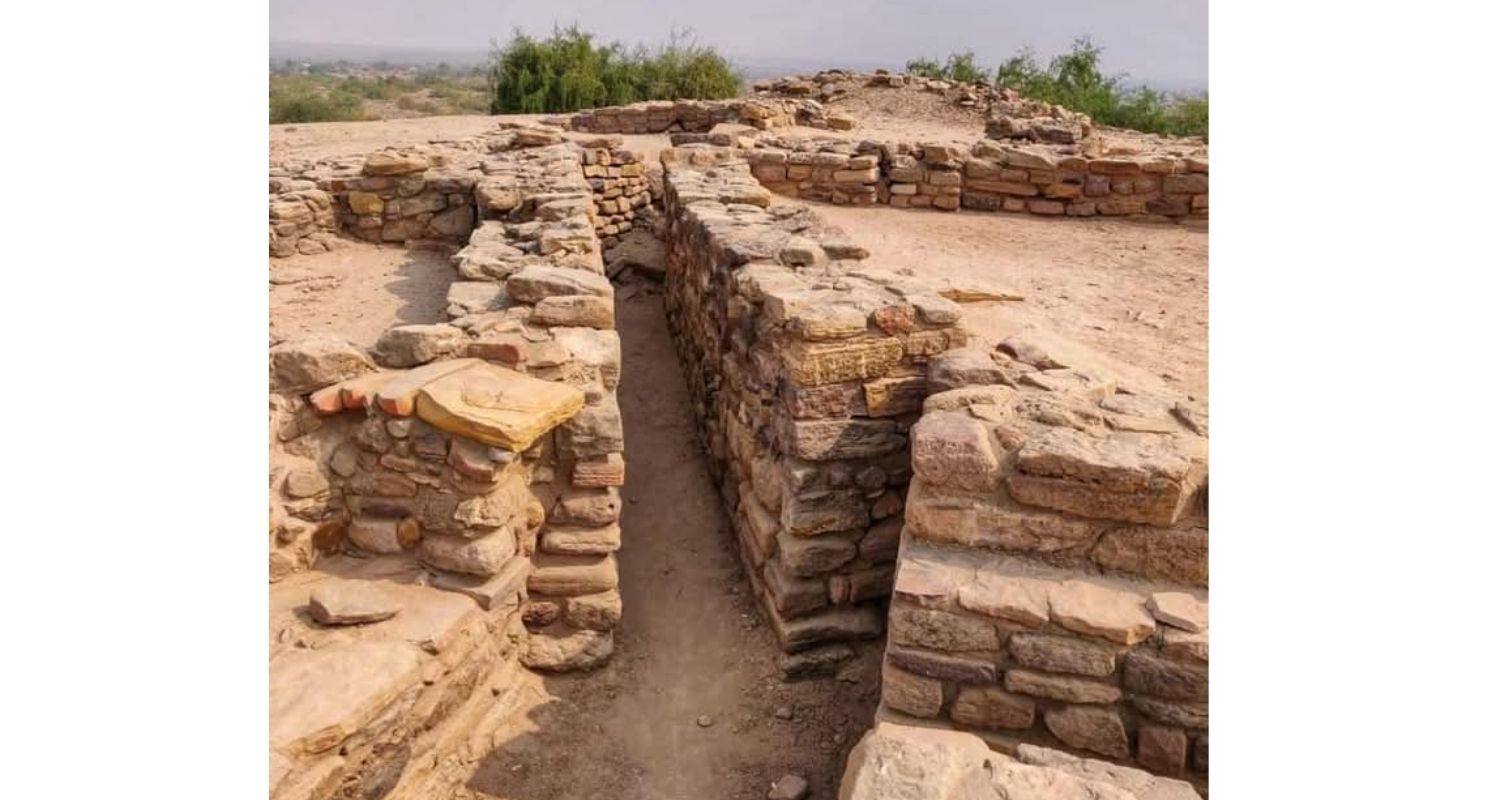
Unique features
The findings during the excavations surprised experts, who had believed to have discovered the complete story of Indus Valley civilisation at Harappa and Mohenjo-daro. The Dholavira excavations provide invaluable insights into the way ancient people used technology, culture, social organisation and planning.
The city space of Dholavira is designed in three stages; the citadel, the middle town and the lower town—it is the only ancient city that is divided into three parts. Citadel is a fortified, elevated area that served as administrative and ceremonial centre of the city, a part of it was known as bailey, where the important officials resided. The lower town is farther and lower than the rest of the two parts.
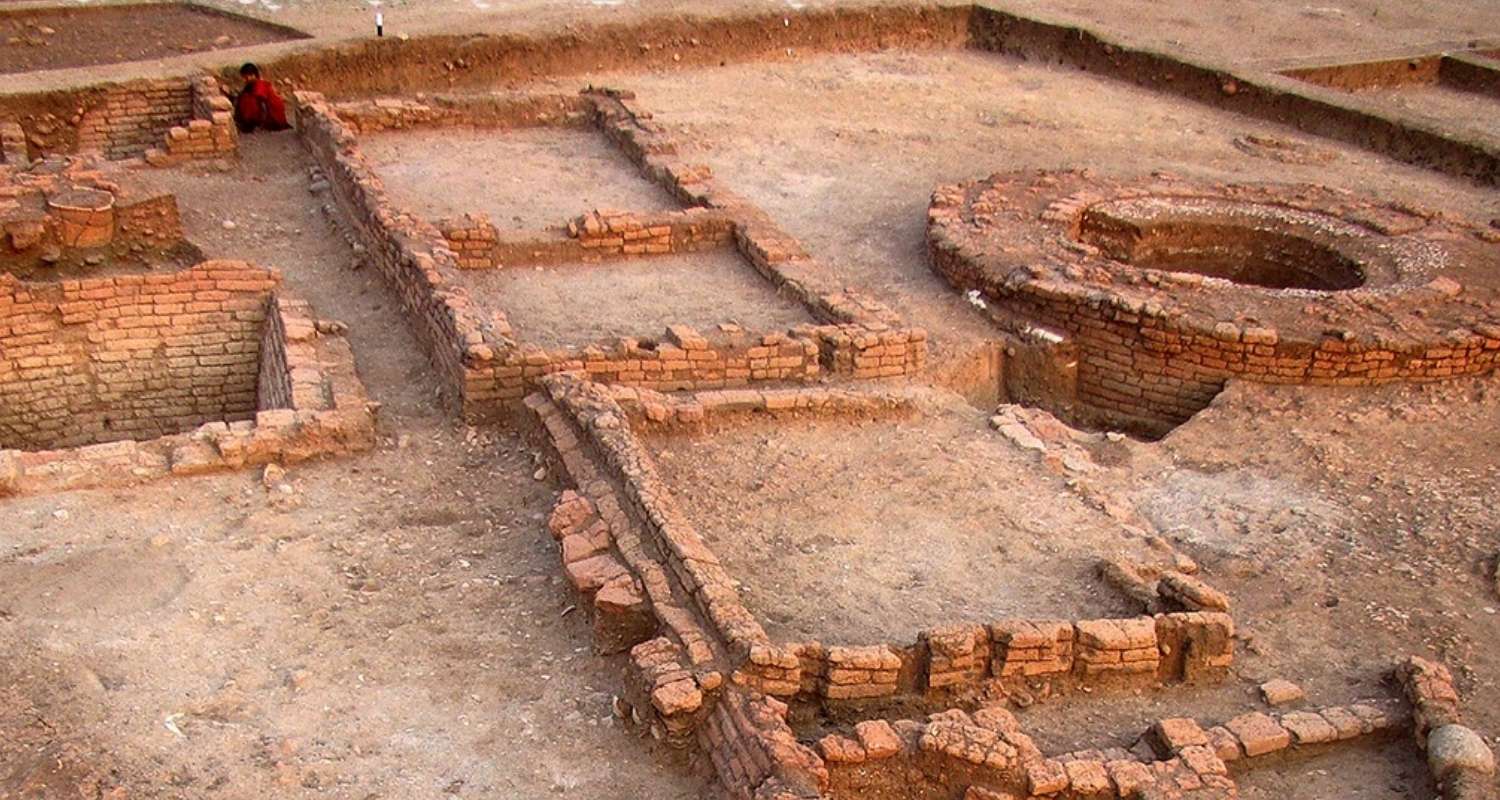
Also read: Soaked in tradition: The Ukrainian midsummer night
The city was also boldly outlined by massive walls—their axis being from east to west. There is large-scale use of sandstones and mud bricks. The masonry at the citadel is different—the kind of stone masonry and use of large pillars found at citadel site is not used in other parts of the town.
Two multi-purpose grounds are part of the town—one for festivities and the other for market place. The burial sites are semi-circular stupa kind of structures—these are memorials.
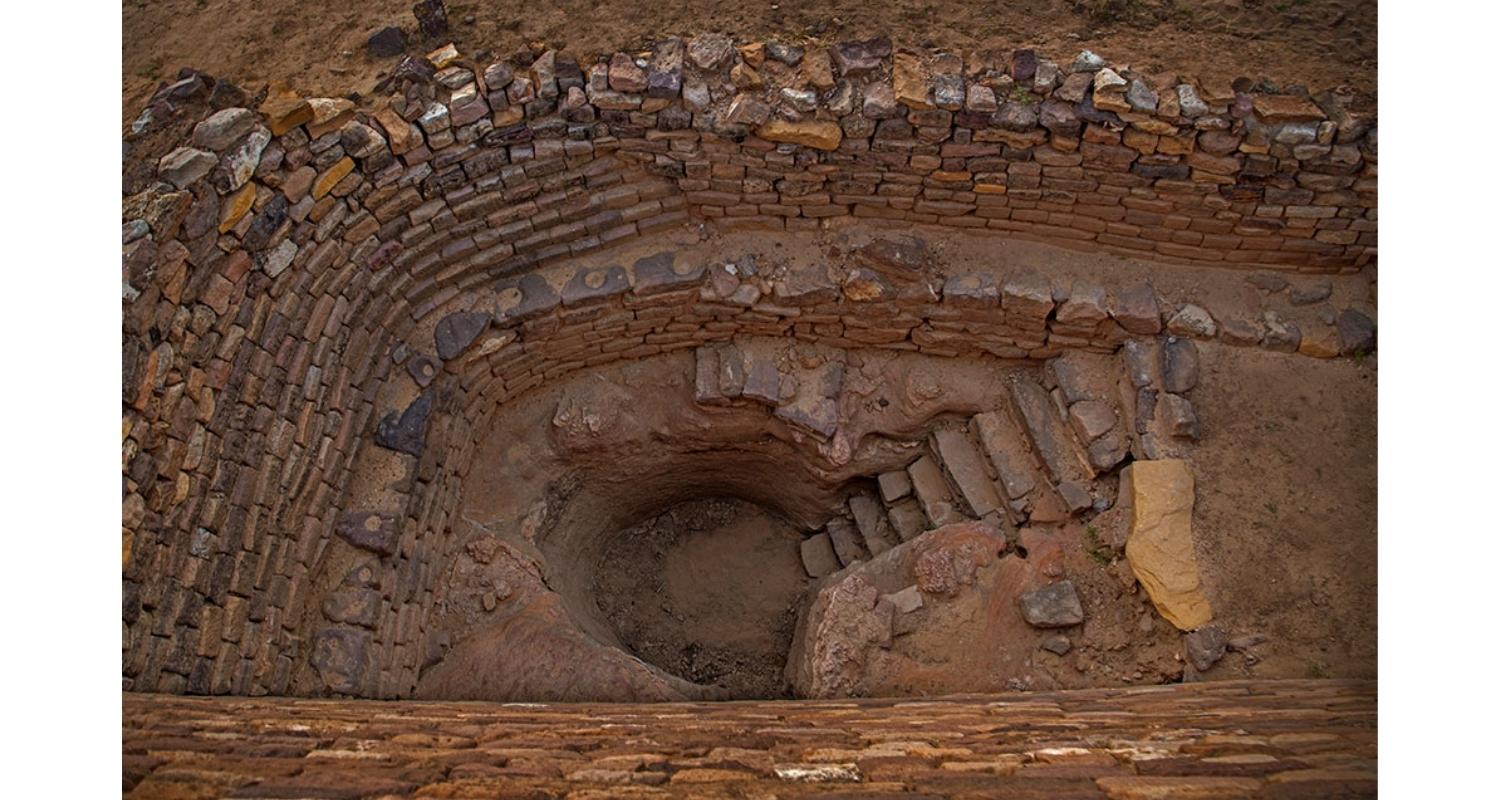
Another striking feature is its water management system. It sourced water from two seasonal streams—Mansar in the north and Manhar in the south. A highly advanced irrigation and drainage system evident at the site in the form of water storage tanks and channels would be a point of envy for any modern town planner, since it survived through millennia.
The oldest signboard ever found
The museum houses several pieces of pottery, beads and interesting artefacts like seals with animal figures that indicate their use for identification or authentication, perhaps in trading system. The most fascinating object at Dholavira is a yet undeciphered notice board, made of ten symbols.
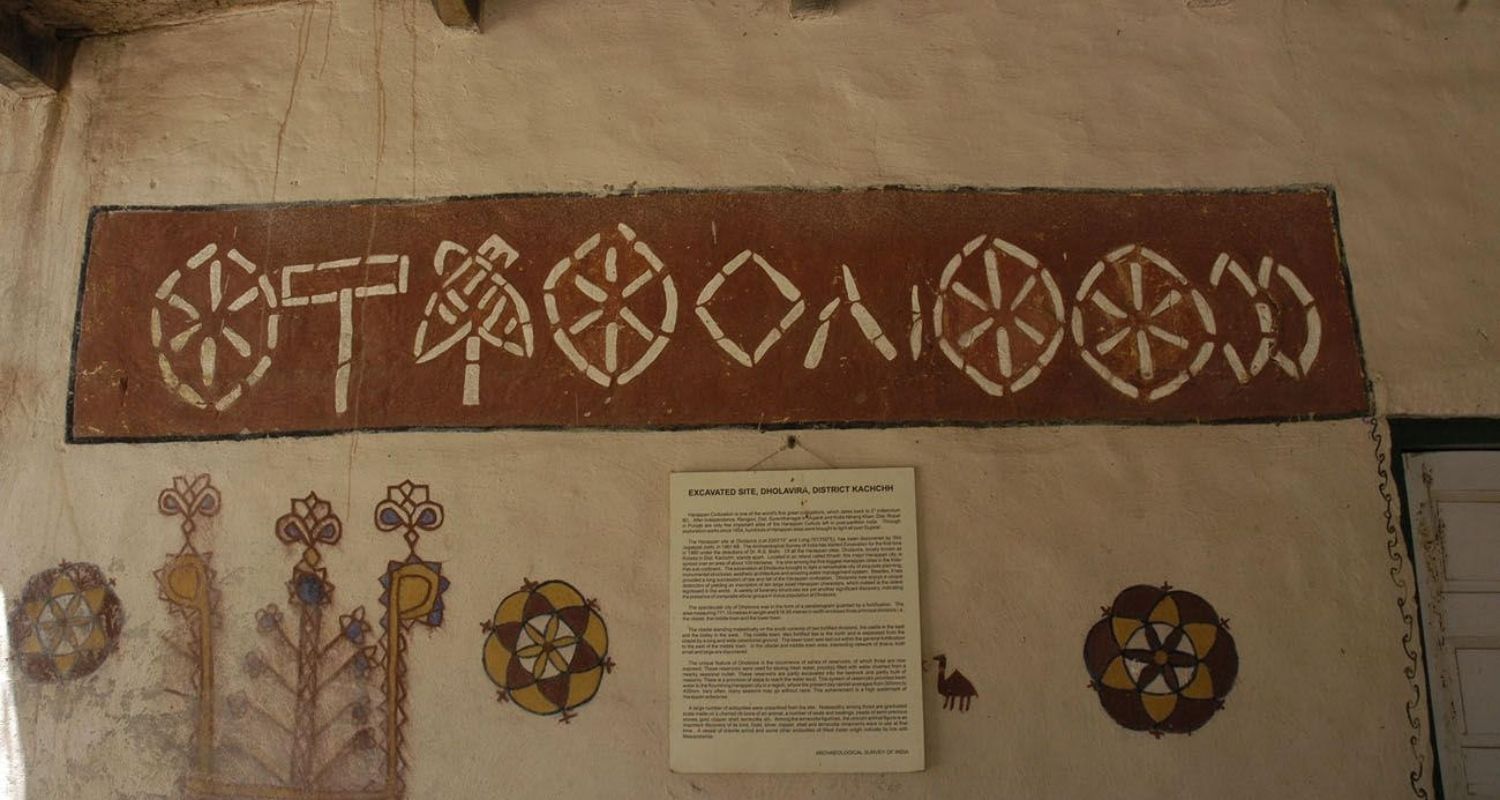
The signboard was discovered at the northern gateway of the city’s citadel; a large rectangular panel made of gypsum depicting ten large symbols arranged in a row. Believed to be part of Indus script, it is the longest inscription found from Indus civilisation. Experts believe it could be a message or announcement for those entering the city, the kind we see these days at city entry points or, could be a message for the public for a yagna or some kind of ritual.
The signboard is dated to the Classic Age of the Indus Valley Civilisation-approximately 4,625 to 3,925 years ago.
Weights and measures
The inhabitants of Indus Valley civilisation were living a life that was almost as advanced as we can claim to know in the 21st century. Their expertise is evident not only in terms of town and water management; they were using a decimal system for measurements and weights.
The weights were made of rocks (chert). For smaller weights a binary system was used while for the higher weights decimal system was in use. One can see the weights and measurements displayed at the museum.
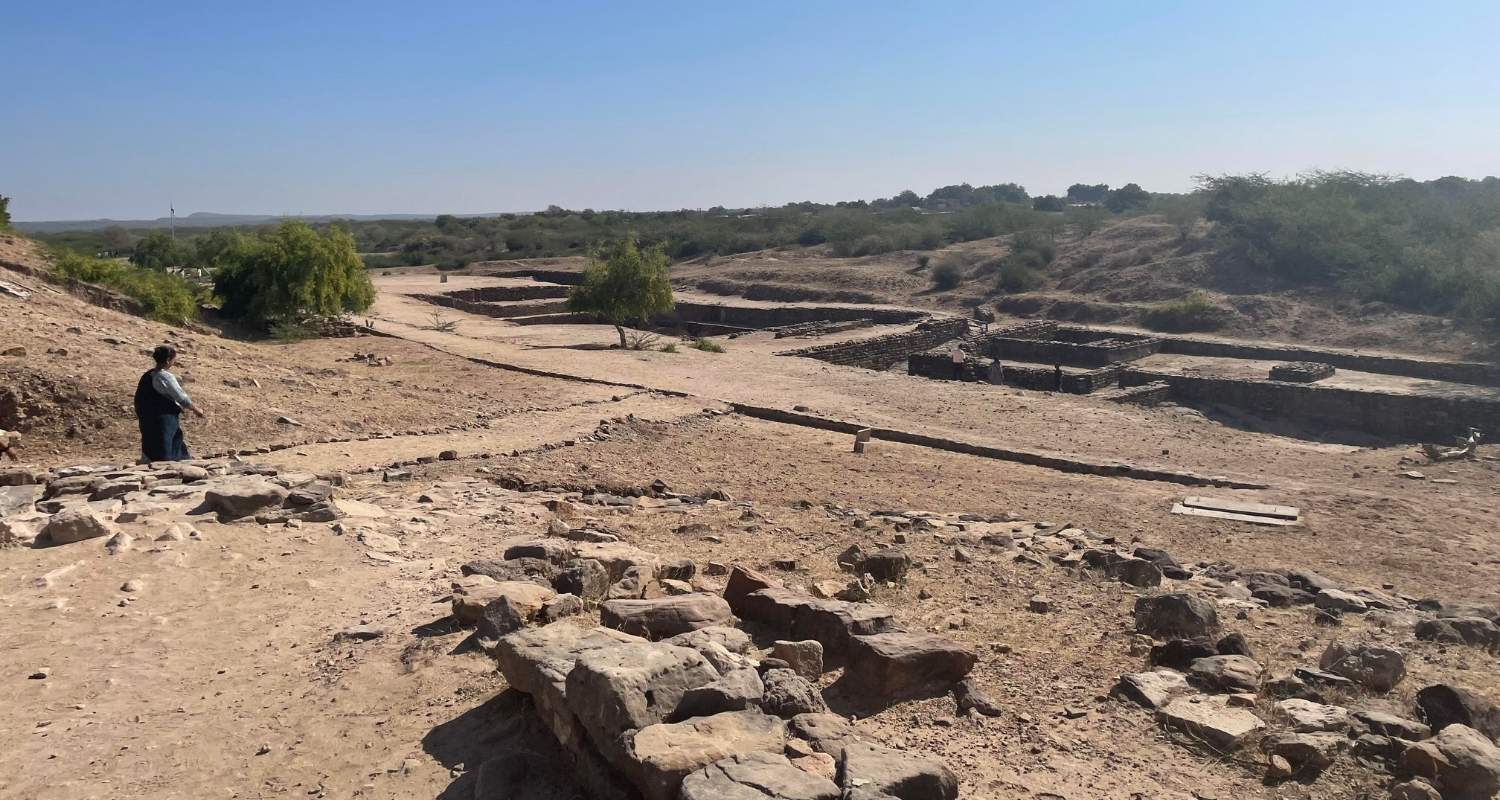
The pottery is mostly red and black – which was used for cooking and storage. The Buff ware was used for serving and ceremonial purposes. One can find similarities with the decorative designs found even today in some regions of India. The aesthetic balance is evident in the pottery and bead jewellery. The beads-- made of steatite, carnelian, lapis lazuli, terracotta, gold, silver and copper are exquisite. It suggests, people were well off and maintained a good standard of living.
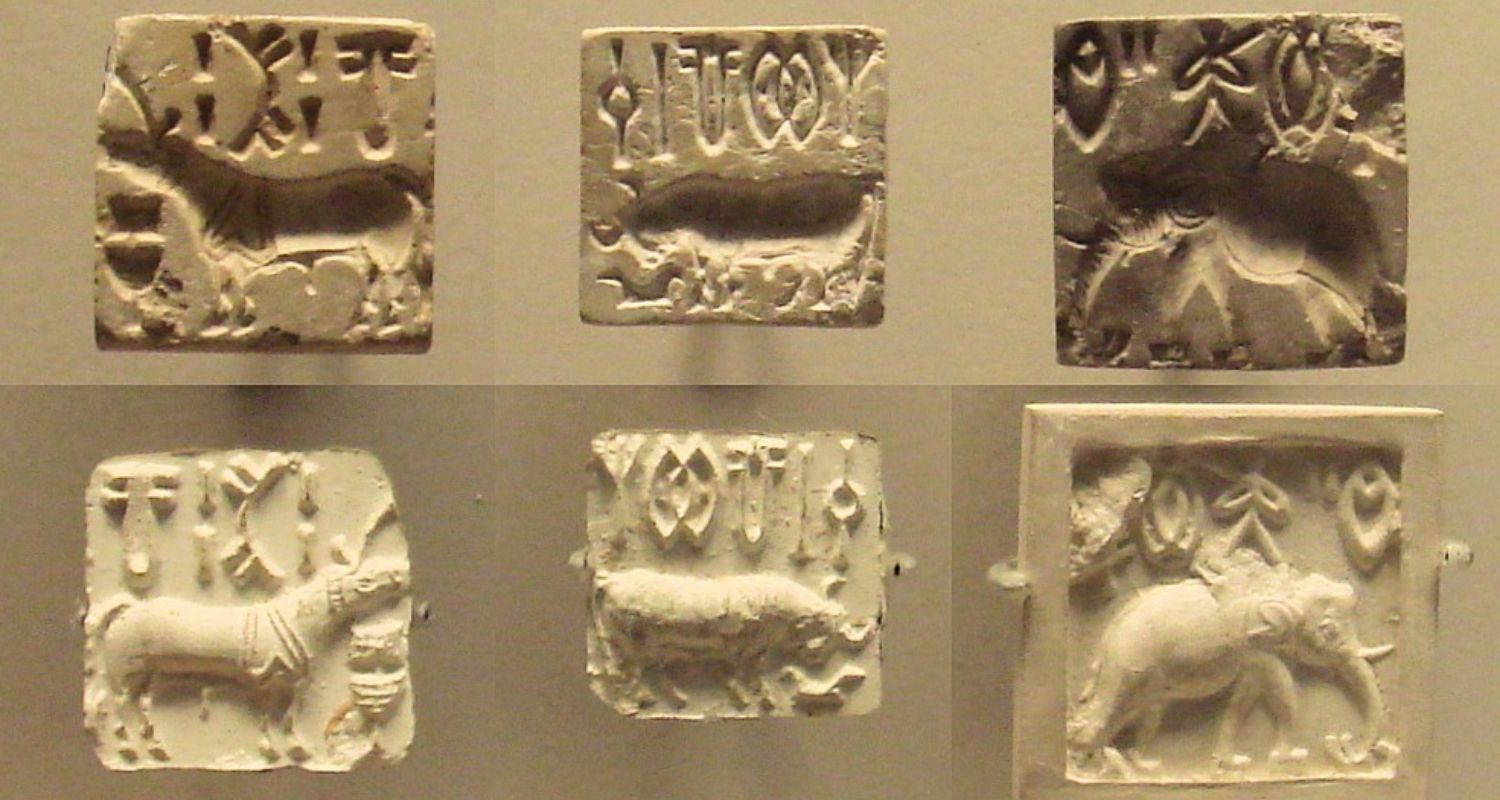
The access to raw material sources like copper, shell, agate—carnelian, steatite, lead and banded limestone facilitated internal as well as external trade, say experts. The findings through excavations established that trade was taking place between Dholavira and the present-day Oman peninsula and Mesopotamian region. The research findings in the region continue to reveal more such eye-openers for those who believed only modern man understands planning and design, trade and travel.
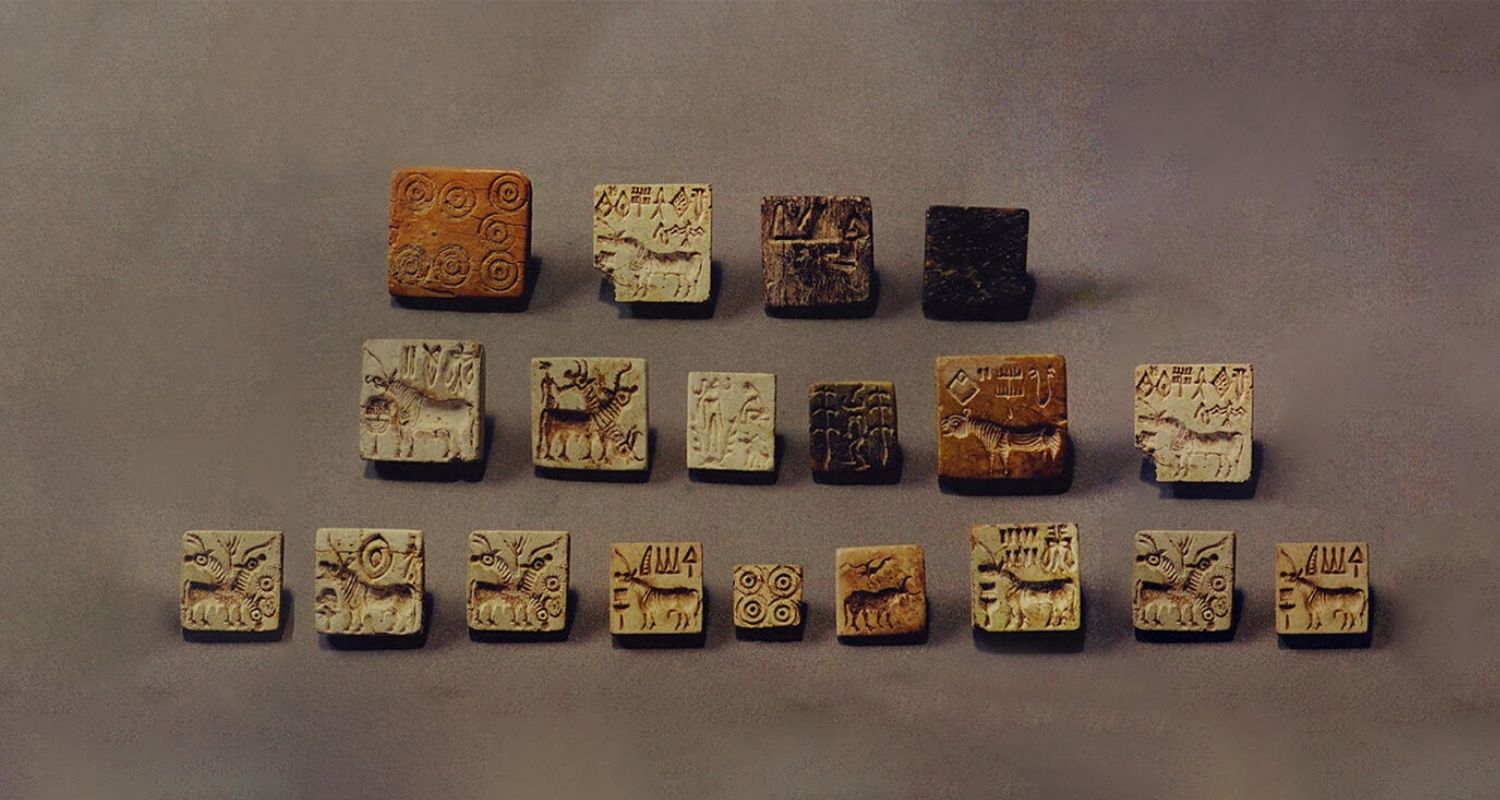
This highly developed city turned into a ghost town -- how it happened, no one knows. Albeit it shows — nothing defeats the vagaries of time.
By Vandana Shukla
